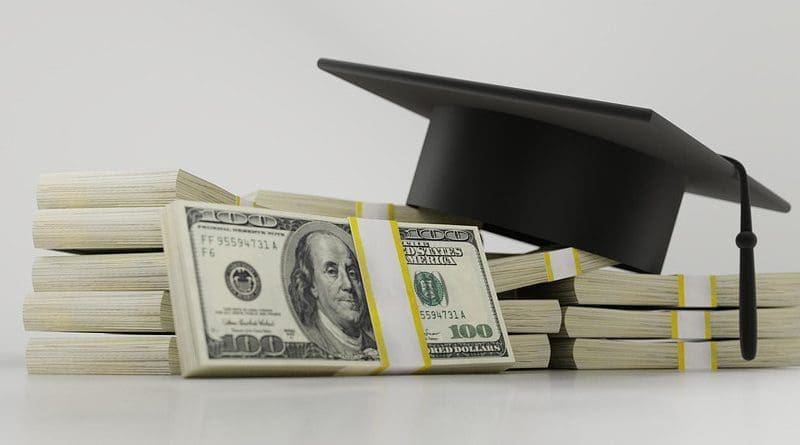The Student Debt Crisis Is A Racket – OpEd
By MISES
By Connor O’Keeffe
Ahead of a contentious election this fall, President Joe Biden is frantically working to transfer more tax dollars to college-educated voters. Last week, the White House announced another $1.2 billion in student loan forgiveness, bringing the president’s total in canceled debt to $138 billion.
Biden’s efforts have reignited a long-held debate over student debt and the affordability of college more broadly. Free market advocates are often quick to point out that, due to the distribution of income, tax-funded student debt cancelation represents a forced wealth transfer from poorer, working-class Americans without college degrees to their better-off, frequently white-collar, college-educated counterparts. That’s true.
On top of that, the indiscriminate nature of these forgiveness plans warps the incentive to save money for a big expense like college, rewarding those who borrowed beyond their means at the expense of those who acted prudently.
These are both accurate criticisms of the president’s debt cancelation plans. But it’s important to understand that even if these policies were restructured to better account for the above problems, canceling student loan debt still does nothing to address the deeper cause of the college bubble. In fact, it only stands to make the bubble bigger.
That’s because the true source of the soaring price of college and the absurd level of debt among graduates is the federal government itself.
The federal government has come to effectively control the entire student loan system in the United States. This started in 1965 with the Higher Education Act and escalated with the 1993 Student Loan Reform Act and parts of the 2010 Affordable Care Act.
With that control, Washington has worked to expand lending far beyond what private lenders would offer—all while citing the need to make college more affordable.
The government uses a combination of loan guarantees, where they minimize or eliminate the risk to lenders by forcing taxpayers to cover losses; direct government lending through the Department of Education; and artificially low-interest rates supplied by the Federal Reserve to get loans to students regardless of the risk that they won’t be able to pay them back.
Leading young students into debts they will never get out of is bad enough. But the artificial expansion of student loans also kicks off a painful feedback loop.
More loans mean more demand for college, which means higher prices. Higher prices mean college is less affordable than before. And so more students require loans, which the government helps them acquire—meaning more demand, higher prices, the need for even more loans, and so on.
That is why the price of a college education has shot up in the years since the federal government got involved. And it’s why American graduates now owe almost $2 trillion in student debt. Any proposal that does not first seek to stop this feedback loop is not seriously trying to address this mess.
And make no mistake—Biden, the Democratic Party, and the broader political establishment are not seriously trying to fix the problem. Because the truth is that many of those involved in managing the current situation benefit from this mess.
Obviously, the universities are happy. They’re making more money than they know what to do with. Besides the lavish buildings and resort-level accommodations, colleges have bloated their administrations with diversity officers, sustainability directors, and other ideological positions.
And because the party will come to an end if the government stops inflating this bubble, politicians and federal bureaucrats enjoy an inherent leverage over the intellectuals and scholars that make up the academic wing of the country’s opinion-molding class—something Murray Rothbard and Hans-Hermann Hoppe argue is not just beneficial to the government, but indispensable to its existence.
It’s unreasonable to expect those who benefit from this government-created racket to put an end to it without serious public pressure.
- About the author: Connor O’Keeffe (@ConnorMOKeeffe) produces media and content at the Mises Institute. He has a master’s in economics and a bachelor’s in geology.
- Source: This article was published by the Mises Institute


Ahead of any elections the world over ‘Loan Waivers’ and subsidies of all kinds is an act to garner votes. President Biden has announced $1.2 billion in student ‘Loan Waivers’ bringing the total to $138 billion. American graduates now owe almost $2 trillion in student Loans!
More loans mean more demand for college, which means higher prices and so on. Obviously, the universities are happy as they’re making more and more money. The truth is that many of those involved in managing the current situation benefit from this mess and the trend is indispensable to its existence. Similar is the demand for Farmer ‘Loan Waivers’ in the election year in India.Loans and ‘Loan Waivers’ is a bubbling racket created by the politicians for their constituency vote bank to remain in power.